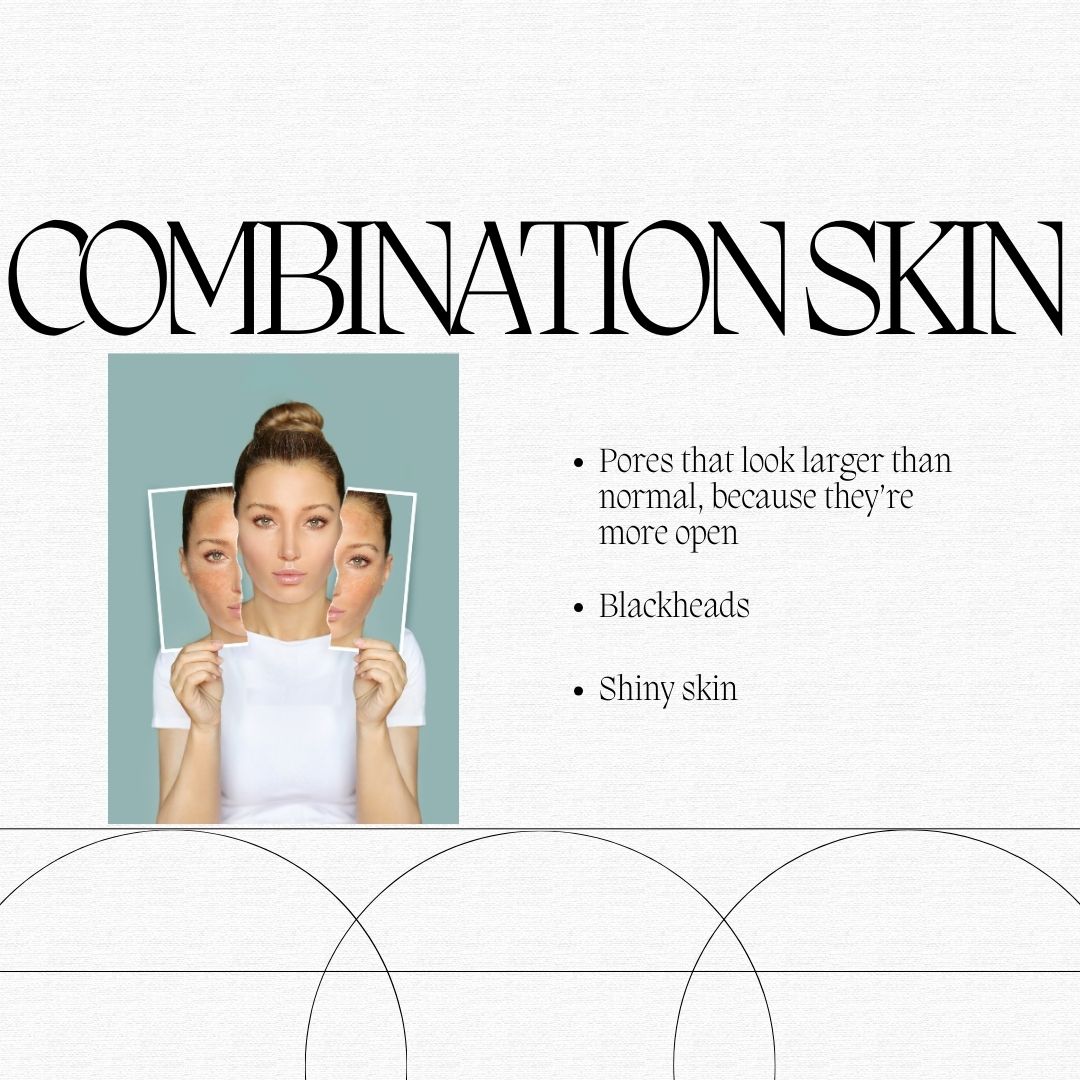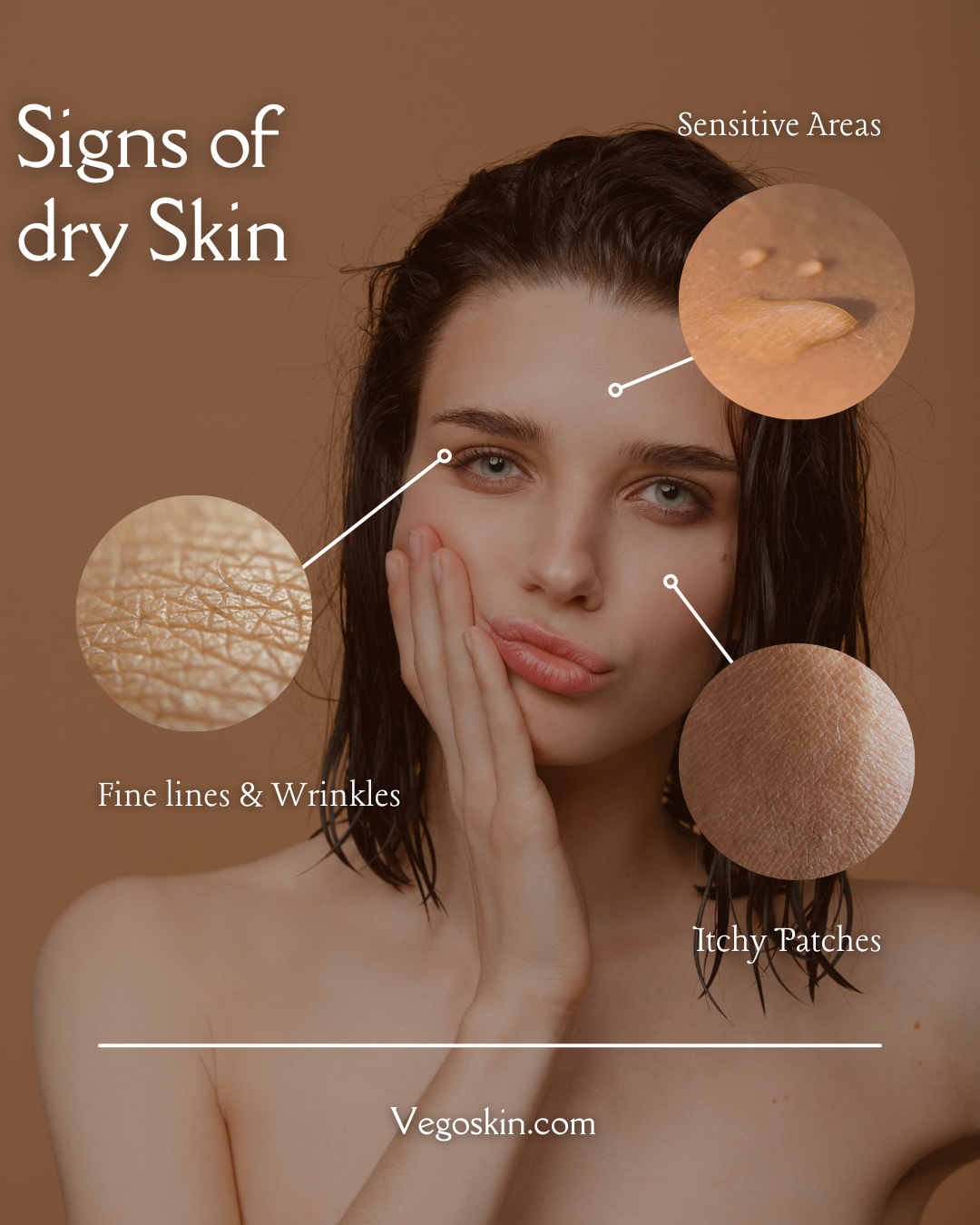The Truth About Combination Skin – What It Really Means
If you’ve ever noticed your forehead and nose glistening with oil while your cheeks feel tight and dry, you might be dealing with combination skin. But what does it really mean to have this skin type, and how can you care for it effectively? In this article, we’ll uncover The Truth About Combination Skin – What It Really Means, diving into its characteristics, causes, and the best ways to manage it for a balanced, radiant complexion.
What Is Combination Skin?
At its core, combination skin is a mix of two or more skin types on different areas of the face. Typically, this means an oily T-zone (forehead, nose, and chin) paired with dry or normal skin on the cheeks and other areas. The result? A complexion that feels like it’s pulling you in two directions at once. You might notice:
- Oily patches: Excess sebum production in the T-zone, leading to shine, enlarged pores, or even acne.
- Dry areas: Flaky, tight, or rough patches, often on the cheeks or jawline.
- Normal zones: Areas that feel neither too oily nor too dry, acting as a middle ground.
The challenge of combination skin lies in its dual nature. Products that control oil might dry out your cheeks, while rich moisturizers can make your T-zone feel like an oil slick. Understanding The Truth About Combination Skin – What It Really Means starts with recognizing this balancing act and tailoring your skincare routine to address both extremes.
Why Do You Have Combination Skin?
Combination skin can stem from a variety of factors, including genetics, hormones, and environmental influences. Let’s break it down:
1. Genetics
Your skin type is largely determined by your DNA. If one parent has oily skin and the other has dry skin, you might inherit a mix of both, resulting in combination skin. This genetic predisposition influences how much sebum (natural oil) your skin produces and where it’s distributed.
2. Hormonal Fluctuations
Hormones play a significant role in skin behavior. During puberty, menstruation, pregnancy, or menopause, hormonal shifts can increase oil production in certain areas while leaving others parched. For example, stress hormones like cortisol can trigger excess sebum in the T-zone, exacerbating combination skin symptoms.
3. Environmental Factors
Your surroundings can also tip the scales. Hot, humid climates might make your T-zone oilier, while cold, dry air can leave your cheeks dehydrated. Overusing harsh skincare products or skipping sunscreen can further disrupt your skin’s balance, intensifying combination skin traits.
4. Skincare Habits
Believe it or not, your skincare routine might be contributing to your combination skin. Using overly stripping cleansers can dry out your cheeks, prompting your T-zone to overcompensate with more oil. Similarly, heavy creams might clog pores in oily areas, leading to breakouts.
To dive deeper into how lifestyle affects your skin, check out this guide from Healthline for tips on identifying and managing your skin type.
The Truth About Combination Skin – What It Really Means for Your Routine
Now that we’ve covered the what and why of combination skin, let’s explore how to care for it. The key is to strike a balance—hydrating dry areas without overloading oily ones. Here’s a step-by-step guide to building a combination skin-friendly routine:
Step 1: Gentle Cleansing
Start with a gentle, sulfate-free cleanser to remove dirt and oil without stripping your skin. Look for a formula that balances your skin’s pH and avoids harsh ingredients like sodium lauryl sulfate. Cleansing twice daily—morning and night—helps keep both oily and dry areas in check.
Pro tip: If your T-zone feels greasy by midday, try a micellar water like Bioderma Sensibio H2O for a quick refresh without over-drying your cheeks.
Step 2: Exfoliation (But Not Too Much)
Exfoliation removes dead skin cells that can clog pores or make dry patches look flakier. However, over-exfoliating can irritate combination skin, so stick to 1-2 times per week. Chemical exfoliants like salicylic acid (for oily areas) or lactic acid (for dry areas) are gentler than physical scrubs.
For a deeper dive into exfoliation, Paula’s Choice offers excellent advice on choosing the right exfoliant for your skin type.
Step 3: Targeted Treatments
Combination skin often requires different treatments for different areas. For example:
- Oily T-zone: Use a lightweight, non-comedogenic serum with niacinamide or retinol to control oil and minimize pores.
- Dry cheeks: Apply a hydrating serum with hyaluronic acid or ceramides to lock in moisture.
Consider multi-masking—using a clay mask on your T-zone to absorb oil and a hydrating mask on your cheeks for extra moisture. Brands like The Ordinary offer affordable serums tailored to specific skin concerns.
Step 4: Moisturize Strategically
Moisturizing is non-negotiable, even for oily areas. Opt for a lightweight, gel-based moisturizer for your T-zone and a richer cream for dry patches. Ingredients like glycerin, aloe vera, or squalane are great for hydrating without clogging pores.
Step 5: Sunscreen Every Day
Sunscreen protects against UV damage, which can worsen both dryness and oiliness. Choose a broad-spectrum SPF 30 or higher that’s non-comedogenic, like La Roche-Posay Anthelios. Apply it as the final step in your morning routine.
Step 6: Adjust Seasonally
Combination skin can shift with the seasons. In winter, you might need a heavier moisturizer for dry areas, while in summer, a mattifying primer can keep your T-zone shine-free. Pay attention to how your skin feels and adapt accordingly.
For more personalized skincare tips, Dermstore’s blog is a fantastic resource for combination skin advice.
Common Myths About Combination Skin
There are plenty of misconceptions about combination skin that can lead to skincare missteps. Let’s debunk a few:
Myth 1: You Only Need One Product for Your Whole Face
Because combination skin has different needs, a one-size-fits-all approach rarely works. Using the same heavy cream on your T-zone and cheeks can lead to breakouts, while a single oil-controlling product might leave dry areas parched.
Myth 2: Oily Areas Don’t Need Moisturizer
Skipping moisturizer on your T-zone can actually make it oilier. When your skin is dehydrated, it produces more sebum to compensate. A lightweight moisturizer keeps oil production in check.
Myth 3: Combination Skin Is Always Acne-Prone
While oily areas can be prone to breakouts, not everyone with combination skin struggles with acne. Proper cleansing and non-comedogenic products can prevent clogged pores.
Myth 4: You Can’t Change Your Skin Type
While you can’t alter your genetics, you can improve your skin’s behavior with the right routine. Consistent care can minimize oiliness, reduce dryness, and create a more balanced complexion.
Lifestyle Tips for Managing Combination Skin
Skincare isn’t just about products—your lifestyle plays a huge role in how your skin behaves. Here are some tips to support your combination skin:
1. Stay Hydrated
Drinking plenty of water helps maintain your skin’s moisture balance. Aim for at least 8 glasses a day, and consider adding hydrating foods like cucumber or watermelon to your diet.
2. Eat a Balanced Diet
A diet rich in antioxidants (think berries, leafy greens, and nuts) can reduce inflammation and support skin health. Limit processed foods and sugars, which can trigger oil production and breakouts.
3. Manage Stress
Stress can worsen combination skin by increasing cortisol levels, which stimulate oil glands. Try mindfulness practices like yoga or meditation to keep stress in check. Apps like Headspace can guide you through stress-relieving exercises.
4. Get Enough Sleep
Sleep allows your skin to repair and regenerate. Aim for 7-9 hours per night to prevent dryness, oiliness, and breakouts.
5. Avoid Touching Your Face
Your hands carry oils and bacteria that can clog pores, especially in the T-zone. Be mindful of touching your face throughout the day.
The Truth About Combination Skin – What It Really Means for Your Confidence
Living with combination skin can feel like a constant juggling act, but it’s also an opportunity to get to know your skin on a deeper level. By understanding The Truth About Combination Skin – What It Really Means, you can embrace its unique needs and build a routine that brings out your natural glow. The goal isn’t perfection—it’s about finding balance and feeling confident in your skin.
Whether you’re dealing with a shiny T-zone, dry cheeks, or both, the right products and habits can make all the difference. Experiment with different ingredients, listen to your skin, and don’t be afraid to seek advice from a dermatologist if you’re struggling. With a little patience and consistency, you can transform combination skin from a challenge into a strength.
For professional insights, consider booking a consultation through Curology, which offers personalized skincare plans for combination skin and beyond.
Final Thoughts
Combination skin is neither a curse nor a mystery—it’s simply a reflection of your skin’s unique needs. By uncovering The Truth About Combination Skin – What It Really Means, you’re empowered to care for it in a way that feels effortless and effective. From gentle cleansing to targeted treatments, every step in your routine is a chance to nurture your skin and boost your confidence.
Ready to take control of your combination skin? Start by assessing your current routine, incorporating some of the tips above, and exploring trusted resources like Allure’s skincare guides for inspiration. Your skin deserves to shine—balanced, healthy, and beautifully you.



